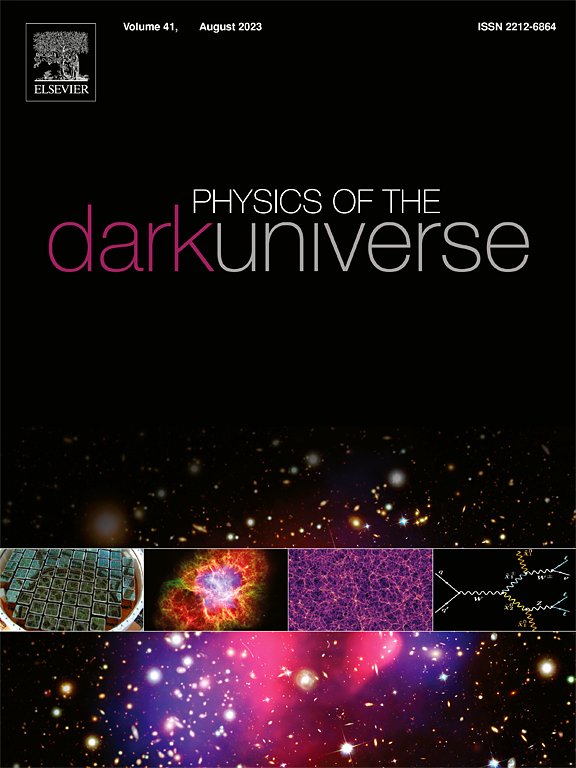Gravitational wave from extreme mass-ratio inspirals around a Kerr–Taub–NUT black hole
IF 5
2区 物理与天体物理
Q1 ASTRONOMY & ASTROPHYSICS
引用次数: 0
Abstract
We have computed the gravitational waves emitted from extreme mass-ratio inspirals (EMRIs) around the Kerr–Taub–NUT black hole using a hybrid method. Firstly, we derive the analytic expressions of the orbital energy, angular momentum and Carter constant for the generic geodesic orbits, and compute the orbital frequencies numerically. To evolve the orbital parameters adiabatically, we adopt the hybrid fluxes based on the radial motion period in the Kerr–Taub–NUT black hole and the Kerr fluxes in the numerical kludge model. Using the inspiraling trajectories, we compute EMRI waveform to assess the difference of waveforms from the Kerr and Kerr–Taub–NUT BHs. We find that, LISA can distinguish the EMRIs waveform from the Kerr–Taub–NUT black hole with a NUT charge as smaller as . After one year observation of EMRI signal, the constraint on NUT charge by LISA can be measured within an error of , which is correlated with the measurement errors of the other intrinsic parameters.
求助全文
约1分钟内获得全文
求助全文
来源期刊

Physics of the Dark Universe
ASTRONOMY & ASTROPHYSICS-
CiteScore
9.60
自引率
7.30%
发文量
118
审稿时长
61 days
期刊介绍:
Physics of the Dark Universe is an innovative online-only journal that offers rapid publication of peer-reviewed, original research articles considered of high scientific impact.
The journal is focused on the understanding of Dark Matter, Dark Energy, Early Universe, gravitational waves and neutrinos, covering all theoretical, experimental and phenomenological aspects.
 求助内容:
求助内容: 应助结果提醒方式:
应助结果提醒方式:


